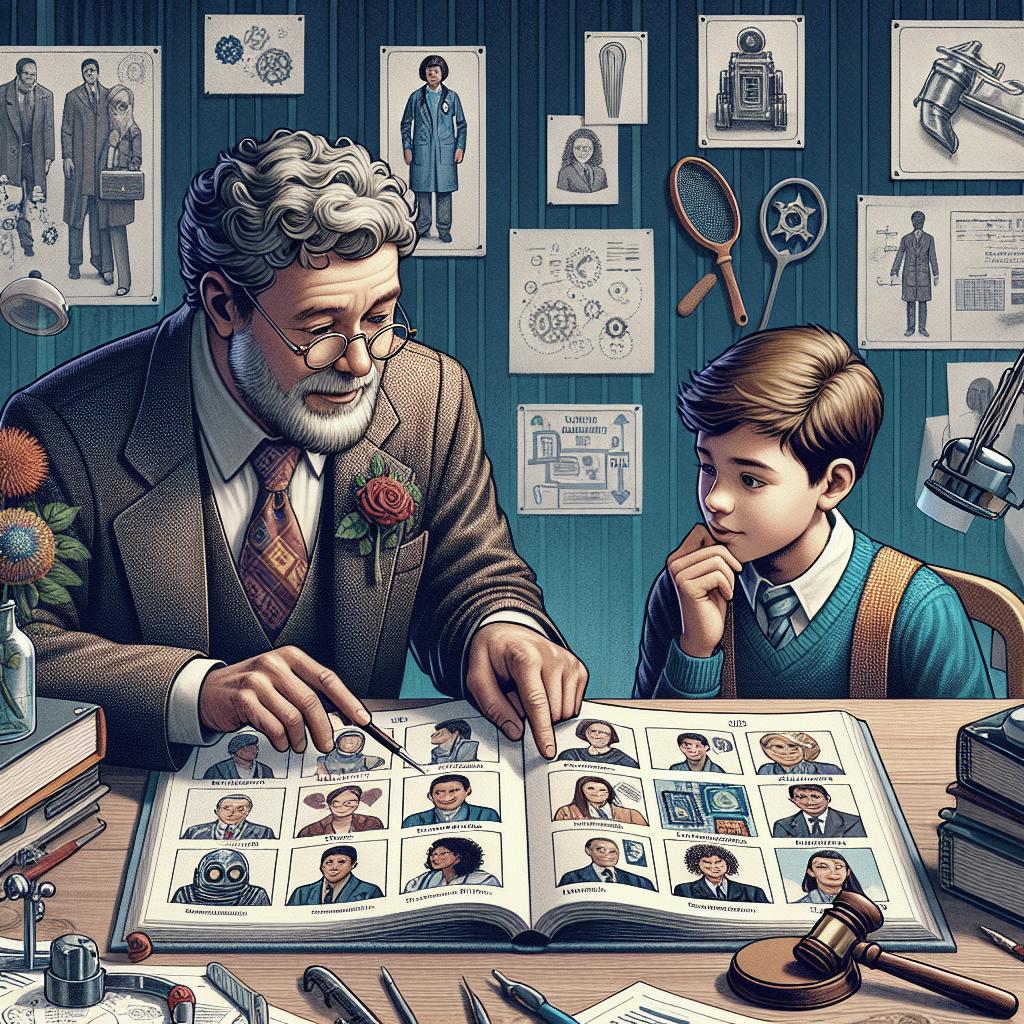“`html
Effective Ways to Teach History to Kids
Teaching history to kids can often seem like a daunting task given the vast timeline and the abundance of data. However, with the right approach, history can become a fascinating subject for young learners. This article explores engaging methods to teach history by starting with relatable narratives and gradually moving towards global contexts. We’ll introduce valuable tips such as simplifying content and utilizing stories to make history resonate. Further, we’ll highlight the use of films and artifacts to create a vivid learning experience. Finally, the article will arm you with creative teaching techniques that can bring history to life for kids, engaging their curiosity and cementing their understanding of the past.
Radical Method: Ditch Ancient History (At First!)
When introducing history to kids, diving straight into ancient civilizations might not always be the most effective approach. Kids can find it challenging to connect with events that happened thousands of years ago. By initially focusing on more recent history or topics that directly impact their world today, you can spark their interest and gradually build a connection to the broader history timeline.
Modern history and current events can serve as an excellent starting point because they often relate more closely to their everyday lives. Once kids have a grasp on recent history’s relevance, teachers can slowly introduce older historical periods, framing them in a context that highlights their impact on the present.
Find Family History
Understanding one’s family history can have a profound impact on children, making history personal and engaging. Encouraging kids to interview family members and learn about their own heritage can reveal fascinating stories from the past that are both meaningful and relatable.
Teachers can create projects where students create family trees or gather stories from grandparents. This exercise not only teaches research skills but also instills a sense of identity and belonging. By anchoring history in personal stories, students are more likely to appreciate and retain what they learn.
One Step at a Time: From Family to Your Country’s Founding
Transitioning from personal history to national history can be seamless if done thoughtfully. Students who understand the importance of their own family history can better appreciate the founding of their country and the significance of national events.
Teachers might weave narratives connecting a family’s immigration story to broader themes of migration and settlement within the country. By incrementally broadening the scope from the personal to the national, kids can build a comprehensive framework of historical understanding.
Read ahead:
Encourage students to build curiosity about upcoming historical topics. Giving them a brief overview or a teaser about what they’ll learn next can spark inquisitiveness and make them eager participants in uncovering the layers of history.
Engaging them with age-appropriate books, documentaries, or digital content can also provide a foundation that will make them enthusiastic to delve into new chapters of history.
7 History Teaching Tips
1. Find Great Homeschool History Curriculum
Choosing the right curriculum is vital for effective history teaching. Look for curriculums that incorporate interactive materials, present balanced perspectives, and align with the learning levels of your students.
Opt for resources that combine visual elements, hands-on activities, and digital apps, ensuring that students remain engaged and motivated while learning history at home.
2. Simplify for Students
Complex historical topics need not be intimidating. Simplify these topics by breaking them down into digestible components. Using clear language and relatable examples, teachers can make complex ideas accessible to young minds.
Building analogies from familiar contexts and encouraging questions can further demystify history, making learning an interactive and student-friendly experience.
3. Make it Stick With Stories
Stories have the power to make history unforgettable. By teaching history through stories, you provide kids with narratives they can relate to and recall easily, making abstract events concrete.
Incorporating folklore, biographies, and legends can enrich lessons, captivating students’ imagination and fostering a lifelong love for history.
4. Accent Learning With Activities
Hands-on activities can transform the learning experience from passive to active. Consider creating crafts, staging reenactments, or organizing themed days related to the historical period being studied.
Interactive activities enable children to experience history tangibly, reinforcing lesson material and enhancing their comprehension through active participation.
5. Help History Hop off the Page
Utilize technology and multimedia to bring history to life. Virtual tours of historical sites, interactive timelines, and augmented reality apps can make historical events more tangible.
Offering students opportunities to witness history through technology helps them understand its relevance and fosters a more profound interest in the subject.
6. Focus on Film
Films can be captivating educational tools. Historical movies and documentaries not only illustrate events but can also evoke emotional responses that deepen understanding and empathy.
Films offering accurate portrayals of historical events provide engaging visual storytelling that can clarify complex historical concepts for students.
7. Review Facts and Relics
Regularly revisiting historical facts and examining artifacts can reinforce knowledge. Consider creating quizzes and scavenger hunts that encourage students to apply what they have learned.
By integrating relics and tactile experiences into lessons, students can forge a stronger connection between historical facts and the real world, solidifying their learning through exploration.
Next Steps
| Method | Description |
|---|---|
| Radical Method | Start with modern history before introducing ancient history to make the content relatable. |
| Find Family History | Engage kids with personal stories and family history to build a connection to the past. |
| Step into National History | Bridge personal history with national history to create a comprehensive understanding. |
| 7 History Teaching Tips | Utilize a good curriculum, simplify complex topics, enhance storytelling, involve activities, use technology, focus on films, and review with authentic artifacts. |
“`


